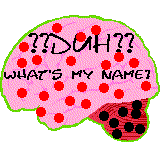D.A.R.E.-----Drug Awareness
Resistance Education
This is your brain:

This is your
brain on drugs:

Part of the reason D.A.R.E. (Drugs Abuse Resistance Education)
works so well is because it is a collaborative effort between your
police department, your school, parents, and community leaders.
D.A.R.E. works because it surrounds children with support and
encouragement from all sides.
D.A.R.E. teaches kids how to recognize and resist the direct and
subtle pressures that influence them to experiment with alcohol,
tobacco, marijuana, and other drugs. And since, between 70%
and 90% of all crime is drug related, it is absolutely vital that we
reach the children of America before it is too late.
The D.A.R.E. program is usually introduced to children in the 5th
or 6th grade. A specially trained officer comes into your school
one day a week for seventeen weeks and teaches the children.
And, to make it easy on you, we've designed the
D.A.R.E. curriculum to integrate easily into your other lessons. Student
participation in the D.A.R.E. program may be incorporated as an
integral part of the school's curriculum in health, science, social
studies, language arts, or other subjects. It is important that you, as
the classroom teacher, maintain a supportive role in classroom
management while the officer is teaching. And, finally, you should
incorporate D.A.R.E. program participation by students as an
fundamental part of your students' final evaluation.
D.A.R.E. teaches kids how to be assertive and to deal with peer
pressure by saying no effectively. Students learn about the dangers
of drugs and gain self-confidence by acting out problem situations.
They are taught to keep their bodies healthy, control their feelings
when angry or under stress and decide whether to take a risk.
Your students are also taught how to respond when a friend
pressures them to use alcohol or drugs and to recognize forms of
influence from peers, parents, and the media. They even get
suggestions for alternative activities to "hanging out" on the streets.
D.A.R.E. teaches kids how to recognize and resist the direct and
subtle pressures that influence them to experiment with alcohol,
tobacco, marijuana, and other drugs. And since, between 70%
and 90% of all crime is drug related, it is absolutely vital that we
reach the children of America before it is too late.
Today, D.A.R.E. reaches approximately 25 million American
students per year in kindergarten through the 12th grade in over
250,000 classrooms. It also teaches them how to resist unwanted
peer pressure and to build and maintain self-confidence. With
D.A.R.E. officers salaries paid by local law enforcement agencies,
the total cost of D.A.R.E. for one child, from kindergarten through
12th grade, is just over $12. This compares to $40,000 per year
for incarceration. We then spend $800 a day and up on treatment
programs, increasing costs exponentially. And in a society where
over 23 million Americans use illegal drugs, prevention far
outweighs the costly alternative.
D.A.R.E.'s impact on reducing
substance abuse among young
people is well-documented both
in terms of quantitative studies
verifying D.A.R.E.'s successes
and in terms of real-life
experiences of D.A.R.E.
students. More than 20 studies
from around the country cite
D.A.R.E. as an excellent
substance abuse prevention
program. Many of these studies
clearly demonstrate D.A.R.E.'s effectiveness in preventing drug,
alcohol, and tobacco use.
The highly acclaimed program gives children the skills they need to
avoid involvement in drugs, gangs, or violence. D.A.R.E. was
founded in 1983 in Los Angeles and has proven so
successful that
it is now being implemented
in nearly 75 percent of
our nation's
school
districts and in 44 countries
around the world.
D.A.R.E. is a police
officer-led series of
classroom lessons that
teach children from
kindergarten through 12th grade how to resist
peer pressure and live productive drug and violence-
free
lives. The
program, developed jointly by
the
Los Angeles Police Department
and the
Los Angeles
Unified School District, initially focused on
elementary school children. It has now been
expanded to include
middle school and
high school students.